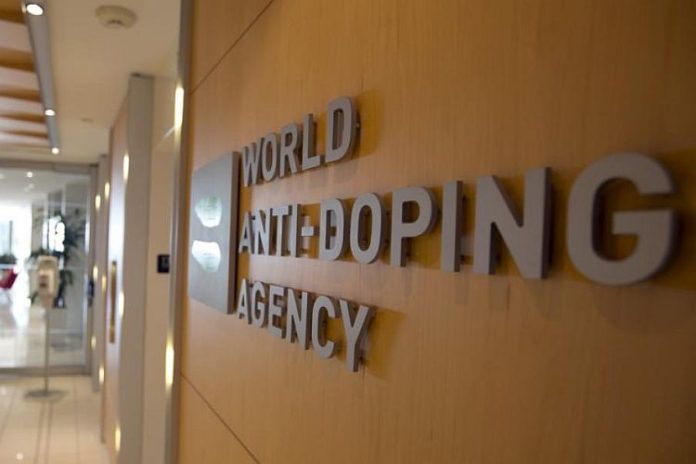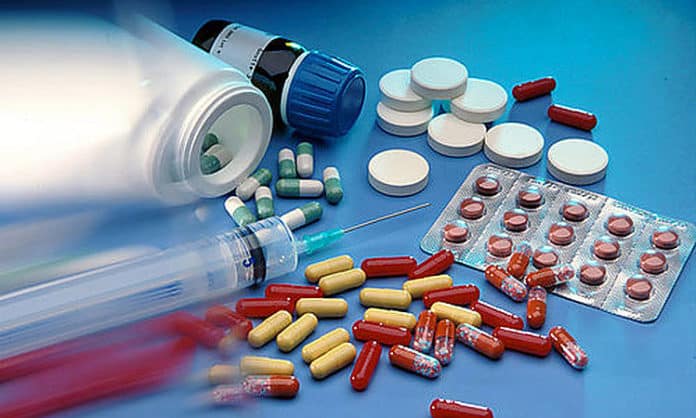★ The Sports Examiner: Chronicling the key competitive, economic and political forces shaping elite sport and the Olympic Movement.★
★ To get the daily Sports Examiner Recap by e-mail: sign up here! ★
★ Friends: Yippee! Now 49 donors have helped to meet our technical costs for 2024. If you’re enjoying TSX, please chip in with your donation.. Add your support to make this site even better. ★
≡ INTEL REPORT≡
In view of a torrent of mis-information that has circulated about the World Anti-Doping Agency and its funding, the WADA Annual Report was posted during the Paris Olympic Games on 7 August.
Presented in an irritating online format which requires endless clicking to move through the report, it nonetheless presents a good overview of WADA’s efforts during 2023. The easier-to-scan financial information offers a very clear idea of who funds WADA, data which has been widely mis-represented in many places.
WADA’s largest individual funder – by far – is the International Olympic Committee at 46.6%. The breakdown:
Total Receipts in 2023: $48.590 million U.S.
● $22.768 million (46.9%): Governmental entities
● $22.625 million (46.6%): International Olympic Committee
● $3.197 million (6.5%): Montreal subsidy, miscellaneous
In terms of which governments contribute the most, by region:
● $10.057 million (45%): Europe
● $6.806 million (31%): Americas
● $4.585 million (21%): Asia
● $599,000 (3%); Oceania
● 66,000 (0.3%): Africa
The formula for government contributions was agreed in 2001 and confirmed at the World Conference on Doping in Sport in March 2003, signed by 193 national governments. The amount paid by the U.S. has been agreed within the “Americas” percentage that has shifted over time, but with the U.S. paying 50% of the Americas’ contribution and Canada paying 25% since 2004. So, for 2023, with the Americas paying $6.806 million, the U.S. share was $3.403 million, or 7.0% of the total WADA budget. Those are the actual numbers.
Any statement that the U.S. is the largest funder among the governmental entities is quite true, but it’s less than a sixth of what the IOC pays. And it’s worth noting that the IOC also funded the start-up of the International Testing Agency, a separate organization, in 2020 with $30 million for 2020-24 and has promised $10 million for 2025-28; the ITA gets most of its funds from the organizations for which it does testing and other services.
A significant growth in the WADA budget is anticipated for 2024 and 2025, to $54.5 million this year and $57.5 million in 2025, with new money coming from expected commercial partnerships, most likely from the medical technology field.
WADA ended 2023 with assets of $80.996 million and reserves of $49.094 million, so its finances are in good shape at present.
The report described a heavy compliance process, which starts with questionnaires sent to national anti-doping agencies as we as regional bodies and International Federations. These are reviewed and compliance issues with the World Anti-Doping Code are identified.
In 2023, a high total of 108 “compliance procedures” from 88 different organizations were created, but most – 82% – were resolved before any sanctioning review took place, a positive development. At the end of 2023, three National Olympic Committees were non-compliant – Gabon, North Korea and Russia – and the first two became compliant in 2024. Four NOCs have appealed their non-compliant status to the Court of Arbitration for Sport:
● Nigeria
● Russia
● South Africa
● Venezuela
As far as Russian state-sponsored doping scandal, the impact of the 2019 retrieval of data from the infamous Moscow Laboratory continues, with “the number of athletes who have now been sanctioned as part of this project has reached the 253 [cases] milestone, with an additional 32 charged and 94 cases that remain under investigation.”
The overall prognosis on compliance: “[I]n 2023, there is evidence that the maturity of the anti-doping system is increasing, although compliance by all Signatories is still not ‘business-as-usual.’ WADA continues to require compliance measures to verify and monitor Signatory compliance, and deadlines have proven effective in encouraging Signatories to take the necessary actions.”
On the scientific front, the report noted that the Athlete Biological Passport program, which allows for longer-term tracking of athlete readings, added two important tools in 2023. The first was the Endocrine Module, which offers a better reading on the use of prohibited Human Growth Hormones (hGH) than previous tests. Also, testing for steroids in blood samples has been improved and “provide a more immediate temporal snapshot of steroid levels prior to metabolism and excretion in urine.”
Interestingly, the blood steroidal markers “has helped identify normal blood steroid results in some cases of athletes with long-standing suspicious urine profiles, indicating that their urine data was most likely not due to doping.”
WADA is involved and funds in more than 100 projects and studies worldwide, both in the development of better anti-doping strategies and testing, and in education programs to convince athletes, coaches and others that it’s better not to be doping at all.
At the end of 2023, WADA staff totaled 187 people from 52 nations, working at the Montreal (CAN) headquarters and in field offices in Cape Town (RSA), Lausanne (SUI), Montevideo (URU), and Tokyo (JPN).
No new testing or doping violations statistics were included in the report; these are published elsewhere at different times of the year. The last full report of testing statistics was for 2020.
Despite all the chatter about WADA, its finances are healthy and its footprint, especially in scientific advancements, is expanding. It has a high standing in many countries, but at present, not in several for whom the 2021 Chinese swimming incident, with 23 stars given no sanctions for trimetazidine positives, has shaken confidence in the agency.
¶
★ Receive our exclusive, weekday TSX Recap by e-mail by clicking here.
★ Sign up a friend to receive the TSX Recap by clicking here.
★ Please consider a donation here to keep this site going.
For our updated, 547-event International Sports Calendar for the rest of 2024 and beyond, by date and by sport, click here!


























